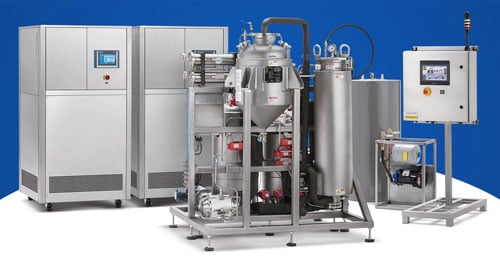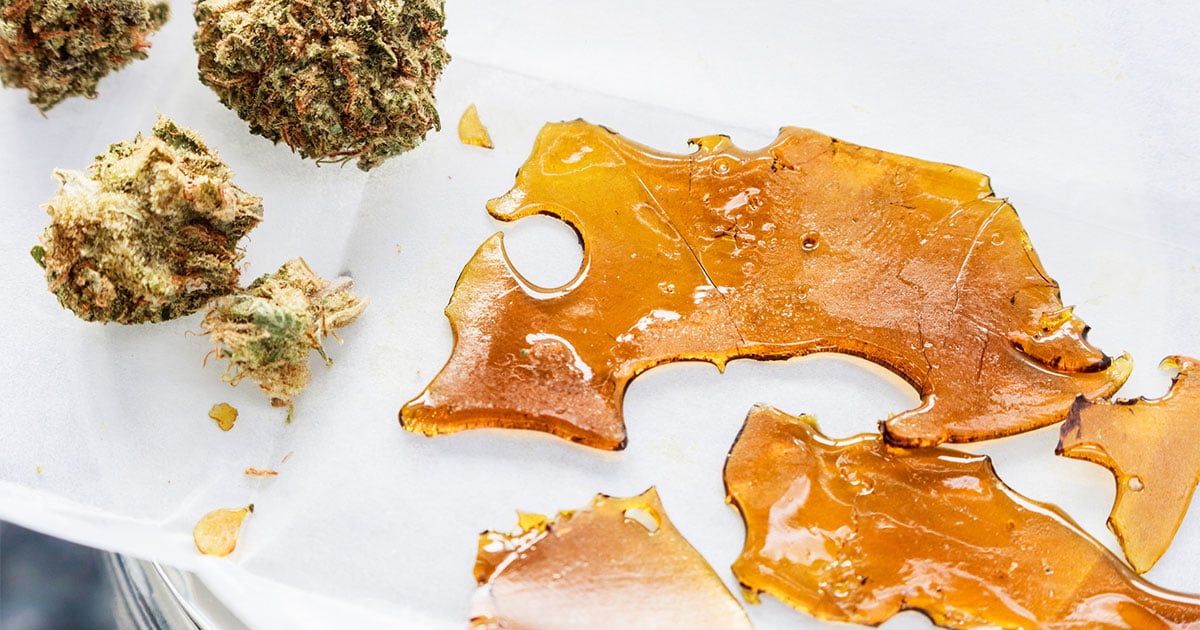
In today's growing cannabis extraction segment, workplace safety is always top of mind. Licensed operators must meet strict building, equipment, and fire codes to reduce the risk of injury to workers and consumers alike.
When it comes to cannabis extraction facilities, operators must consider a few primary safety precautions to keep things running smoothly. By assessing these workplace hazards, businesses can keep their employees safe while producing ultra pure cannabis extracts.
Identifying Workplace Hazards in the Extraction Process
Understanding the risks, big or small, when managing a cannabis extraction facility requires careful consideration. Cannabis workers’ lives depend on it.
While the solutions for many of these safety hazards can require a high initial upfront cost, they are critical to the safety of facility employees and consumers.
In the grand scheme of things, the cost of safety equipment is a small price to pay for worker and consumer safety, as well as brand reputation.
Hazard Communication Program
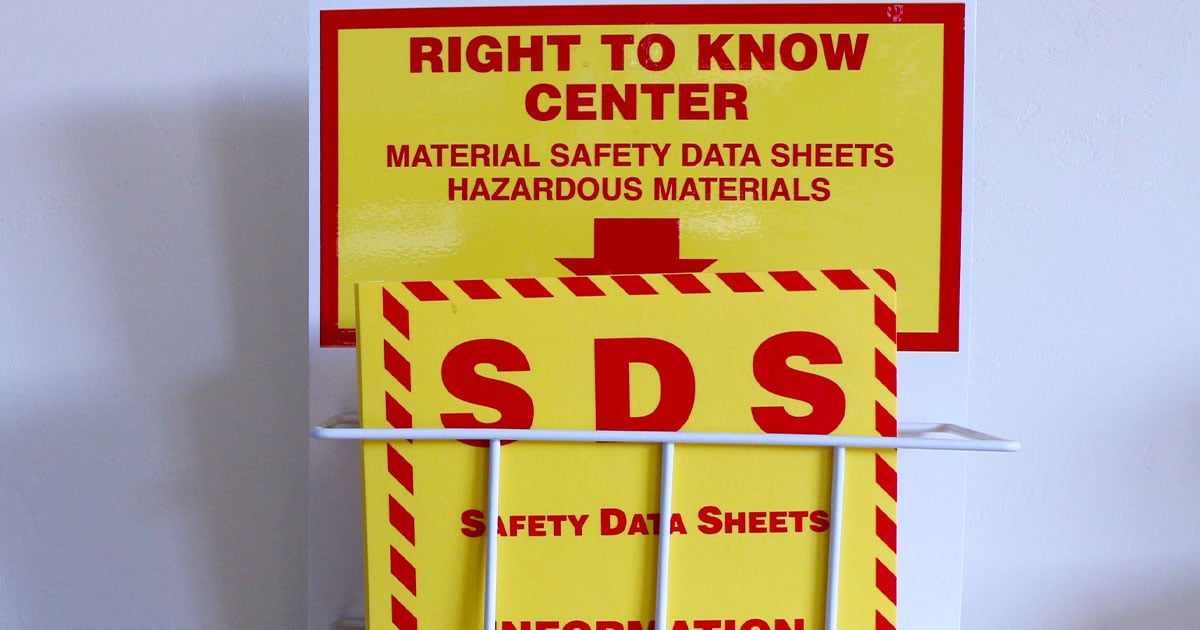
When working in a lab or production facility, there are unique hazards that operators must deal with. From flammable and combustible liquids to supercritical fluid solvents used under high pressures, these workplace hazards can pose a significant risk to extraction technicians.
A business can increase worker safety with a complete Hazard Communication Program (HCP). Employers that deal with hazardous chemicals in the workplace are required by OSHA, Hazard Communication Hazards (HCS), 29 CFR 1920.1200, to implement an HCP.
A proper HCP includes the following elements:
- Identification and communication of all chemicals present in the workplace.
- Identification of Personal Protective Equipment required for safely working with chemicals in the workplace.
- Labels on containers of hazardous chemicals
- Safety data sheets (SDSs) for hazardous chemicals
- Proper handling and disposal of hazardous waste materials.
- Training for workers
- A written program describing how each of the requirements are met
Label Containers
A proper HCP starts with identification of all workplace hazards. Businesses must start by assembling a list of their chemical inventory alongside other critical information such as the supplier, date acquired, amount on site, storage location, and a safety data sheet (SDS).
Maintain an SDS Library/Database
Safety data sheets contain detailed information on the particular hazardous chemical. Businesses must keep a SDS for every chemical used in the workplace and ensure they are readily accessible to employees such as in a binder in a central location or electronically.
SDSs contain 16 distinct sections covering the properties of the chemical. They include the physical, health, and environmental hazards, protective measures, and safety precautions for handling, storing, and transporting the material.
SDSs also include information on how to handle the particular chemical in terms of personal protective equipment (PPE), first aid procedures, and accidental release measures.
Train Employees
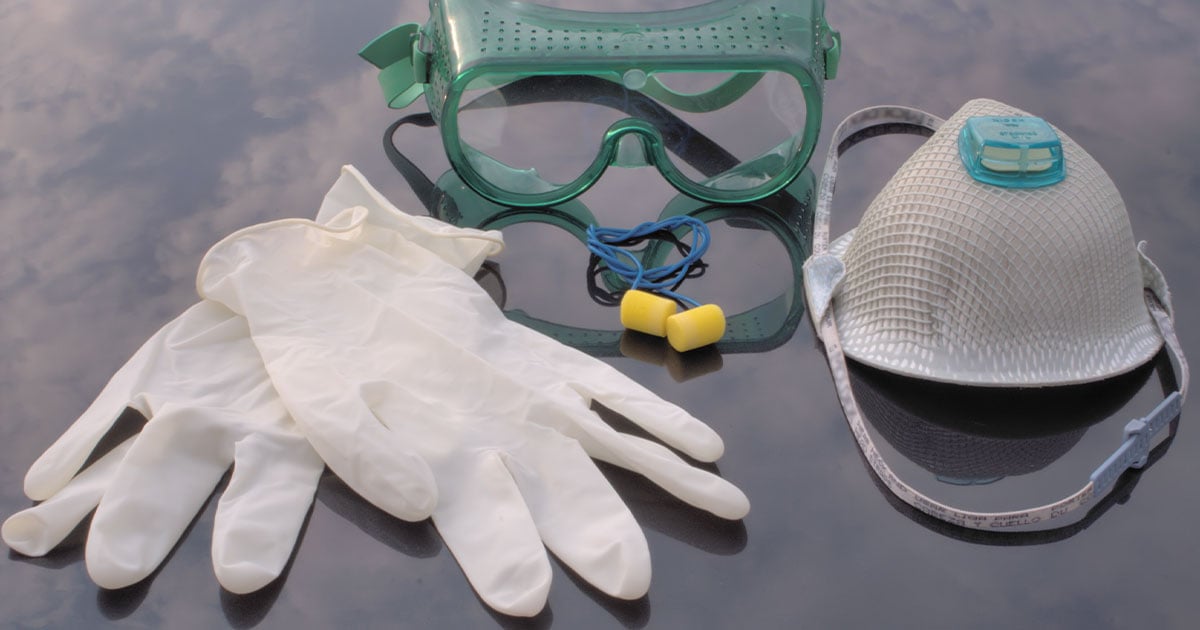
Once businesses have identified all workplace hazards, it is up to the employer to inform and train employees on these hazards chemicals and when new ones are introduced.
Training should be provided before any of the work with the chemicals is done. It is recommended to perform training annually and when there is a close call/incident to go over this critical safety data.
Employees should receive training on areas of exposure in the workplace and symptoms of exposure of the chemicals. Workers must be informed of the protective measures available and how to use or apply them when an incident occurs.
Evaluate Programs
It is important to regularly review the HCP and address any changed conditions in the workplace such as new chemicals or hazards.
Although the HCS does not directly require a review of the program, it does require that the program remain current and relevant for all employees and the best way to do that is through a periodic evaluation.
Plant Extraction Equipment: System Certification
In the medical and recreational cannabis extraction industry, solvent-based extraction processes such as hydrocarbon and alcohol cannabis extraction methods are popular due to their speed and efficiency, especially for large commercial producers who want to keep up with demand and competition.
Due to the increasing use of these solvents by cannabis extraction facilities, there was a growing need for standardization in the design, production, installation, and use of plant oil extraction equipment.
That is where the publication of ANSI/CAN/UL/ULC 1389 comes in. It is recognized as a national standard for U.S. and Canadian extraction facility operations.
Before the publication of this standard, licensed cannabis operators had to go through hoops navigating a varying patchwork of approaches in terms of equipment safety and approval across different markets. As a result, regulators found it difficult to inspect and approve application sites and extraction equipment.
Due to these industry growing pains, some jurisdictions have chosen to hold off on allowing commercial cannabis activity to learn how other communities have handled the growth of their markets before jumping on the cannabis extraction bandwagon.
Underwriters Laboratories (UL) sought suggestions from industry stakeholders such as building inspectors, original equipment manufacturers, regulators, and process facility owners to create an equipment safety standard that covers all the equipment safety issues such as fire, shock, and explosion.
Amateur butane extraction operations at home and improper storage and handling at cannabis processing facilities over the years have proven that safety standardization is necessary. We have all heard of lab accidents that have led to extraction technicians getting burned, or worse, killed.
The newly-established system certification program provides a complete plant oil extraction equipment safety standard that covers preparatory equipment, booths/pods, extractors, post processing equipment, and utilization equipment.
Cannabis extraction equipment, even if it has been approved for use, must be periodically cleaned and maintained to keep its efficiency high and its risk of failure low. Maintaining a closed-loop system at a cannabis extraction facility requires following the manufacturer’s guidance for cleaning and maintenance.
Businesses should be aware of the quality of their connections, valves, and seals. Over time, the materials can break down and increase the risk of leaking the solvent and crude extract. In addition, the manufacturer should check the function of the pump and ensure it does not show signs of slowing down or breaking.
Fire
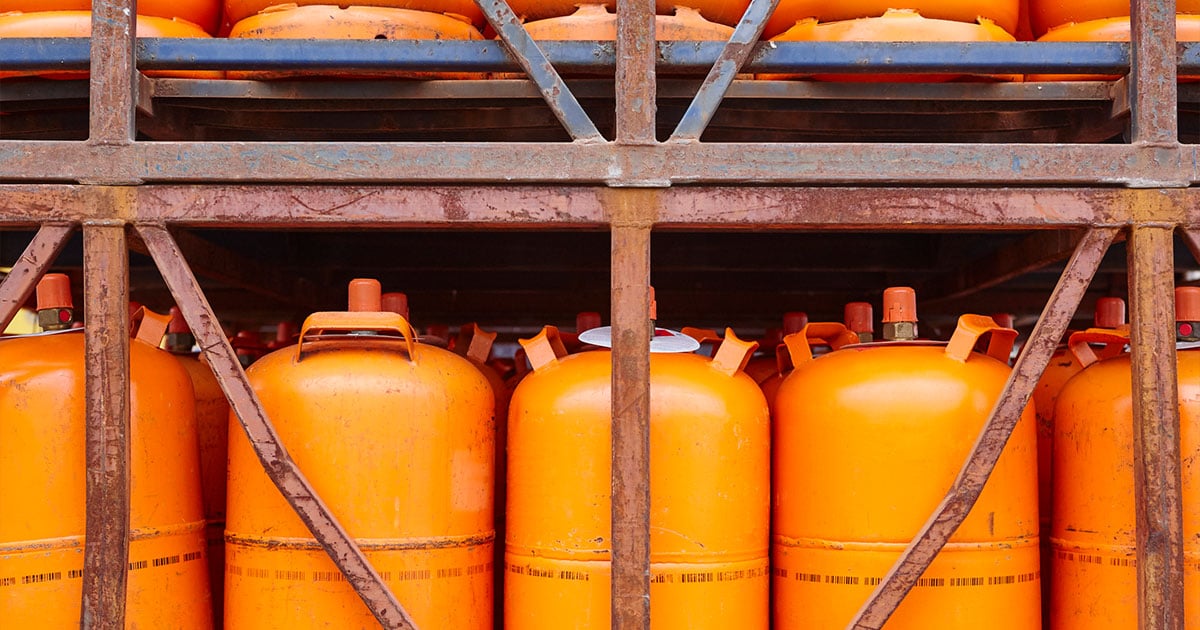
Solvent-based cannabis extractions are one of the most efficient ways of producing a potent and pure cannabis oil. During these processes, operators must handle flammable liquids and gases to be used as solvents that can dissolve the active ingredients in the cannabis plant material.
When using these flammable gases, such as during ethanol or hydrocarbon extraction, there is always a risk of fire or explosion throughout the workflow, if technicians are not following proper safety standard operating procedures.
Let us consider the fire triangle, also known as a combustion triangle, more in depth to understand how the risk of a fire and explosion is always present.
A fire requires the following elements:
- Fuel source
- Oxygen
- Ignition source
Eliminating just one of these components can extinguish a fire. During the cannabis extraction process, operators would need to remove two of the elements of combustion to significantly reduce the safety risk.
A closed-loop system provides a sealed environment where the fuel source is contained and properly handled. A vented hood can remove vapors, and thereby, remove the fuel source.
A permanent Lower Explosive Limit (LEL) monitor should be installed in the cannabis processing room. In addition, businesses should install a 2 to 4 portable and/or fixed gas monitor. It can help monitor for unsafe gas levels in a confined space.
Businesses that want to evaluate the hazards of their flammable solvents can turn to the National Fire Protection Association (NFPA) Code for Flammable and Combustible Liquids, NFPA 30.
NFPA 30 helps companies manage risk and achieve regulatory compliance with state and local regulations by providing employees with a rating of the combustible materials on a scale of 0 to 4 depending on their flash point.
- 0 is the least hazardous with no risk of flammability.
- The 1 rating refers to materials with flash points above 200º F and indicates the chemical requires preheating to burn.
- A 2 rating is for chemicals with flashpoints between 100º and 200º F and can burn with moderate heat.
- A 3 rating refers to materials with flash points between 73º and 100° F.
- Materials with flash points below 73º F are rated 4 and are the most flammable and extremely dangerous.
NFPA 45, Fire Protection for Laboratories Using Chemicals, includes guidance for safe storage of hazardous chemicals.
The reference materials will indicate the maximum quantity of combustible materials that can be stored in the facility. The maximum quantity can be doubled when using safety cans or fire-rated storage cabinets.
Laboratories and processing facilities are classified as one of 4 distinct fire hazard categories depending on the NFPA 45 standard:
- Class A (high)
- Class B (moderate)
- Class C (low)
- Class D (minimal)
The maximum amount of a solvent that can be stored also varies based on the types of container it is in. For instance, a Class IA flammable liquid has the following maximum capacities based on container:
- One pint for glass
- One gallon for metal and approved plastic or polyethylene
- 2.6 gallons for safety cans
Refer to NFPA 45 for the maximum allowable quantities of flammable IA, IB, IC, and combustible class II and III liquids.
Storage of the hazardous material is essential to workplace safety. Businesses must be aware of the hazard class of the chemical and the maximum capacity depending on the containment in order to reduce the risk of a fire or explosion.
In addition, businesses must follow general standard operating procedures when it comes to storing flammable and combustible materials.
- Avoid storing large and heavy containers of liquid up high on shelves or cabinets. Ideally, store them at shoulder level or below.
- Do not store containers on the floor unless they are in a secondary containment.
- Keep flammable or combustible chemicals away from heat sources or direct sunlight.
- Use non-flammable materials whenever possible.
- Place the appropriate work signs such as “No Smoking” and “No Open Flames” to be clearly visible by employees.
- Only store flammable and combustible chemicals in approved cabinets, explosion-proof refrigerators, and safety cans.
- Remove ignition sources from the storage area.
- Move flammable liquids with extreme caution.
Carbon Dioxide (CO2) Exposure
When dealing with supercritical carbon dioxide extraction, operators do not have to deal with flammable liquids and gases such as when dealing with hydrocarbons or ethanol. While this method does not deal with flammable solvents, the CO2 extraction method is not entirely risk-free.
Even though there are generally no flammable gases to worry about in the extraction room, CO2 extractions have a risk of asphyxiation for workers in the event that there is a carbon dioxide leak and enough of the solvent fills a space.
Carbon dioxide gas is colorless and odorless so it is not an obvious threat. In the presence of too much CO2, workers can become unconscious or even lead to death if there are no monitoring systems.
As with any closed loop extraction equipment, one of the best ways to reduce exposure to harmful and volatile solvents is to prevent the solvent release in the first place. In this case, all emergency relief valves are recommended to be piped to the outside of the facility.
Providing proper ventilation in the extraction room is another good way to prevent accumulating unsafe levels of carbon dioxide gas in a confined space.
Installation of a CO2 concentration monitor gives extraction technicians enough time to troubleshoot the carbon dioxide release before the leak becomes unmanageable or deadly.
CO2 concentration monitors provide an audible alarm sound when the carbon dioxide levels reach the OSHA-recommended 5,000 ppm, considerably below the Immediately Dangerous to Life limit of 50,000 ppm.
Cannabis Dust
Cannabis industry workers, including extraction technicians, have a high risk of respiratory issues due to on-the-job exposure to several hazards, including cannabis plant dust. Working with high volumes of cannabis biomass can expose extraction workers to high levels of cannabis dust.
In most cases, the cannabis dust particles are not visible to the naked eye and can lead to short and long-term effects with frequent exposure. With long-term exposure, they may cause severe health issues.
One of the most effective ways to combat the high exposure to cannabis plant particles is with a point source ventilation system, located near the contaminated air source.
When working with trim biomass during cannabis extraction, there may be a higher risk for a lot of dust inhalation without the proper ventilation or respiratory protection. The right ventilation can significantly reduce the harmful area particles from the work area.
In addition, a cannabis extraction facility can adopt safety protocols to include wearing NIOSH-approved N95 disposable respirators to prevent the particles from being inhaled.
Solvents
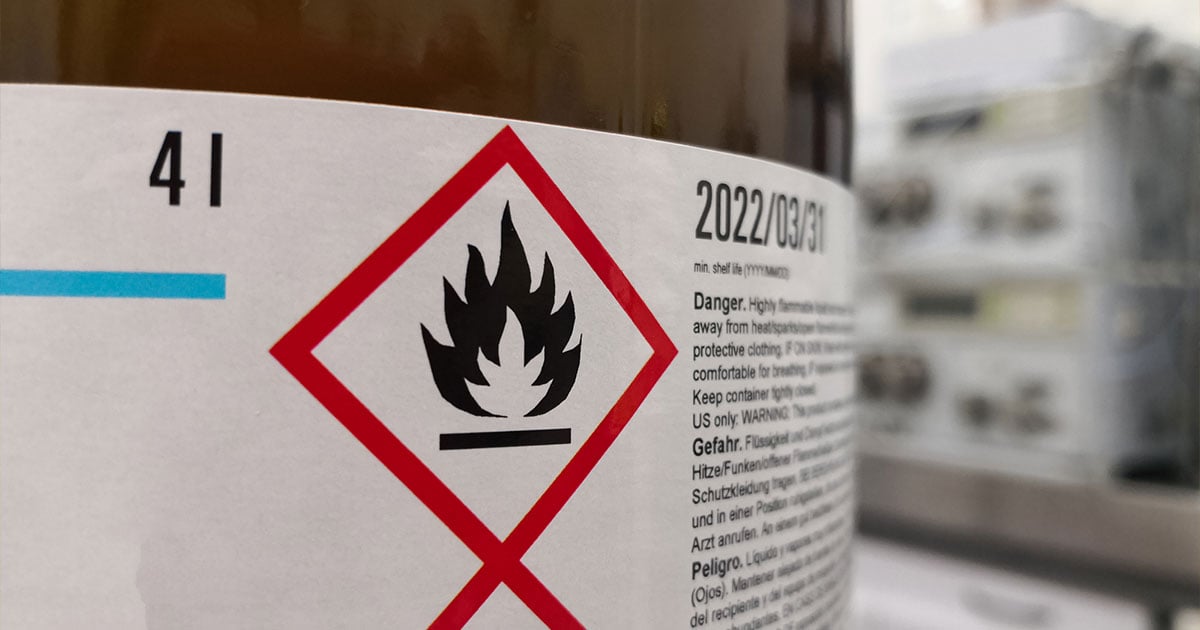
When working with flammable, toxic, and asphyxiating solvents, there exists the risk of exposure to unsafe levels of harmful vapors. Solvents such as ethanol, butane, and propane can create dangerous vapors that can cause damage if workers are exposed to high levels, especially for long periods of time.
Cannabis extraction facilities should invest in point source ventilation or a specialized ventilation system to remove the vapors from the work area. Businesses should follow OSHA occupational limits for exposure to these solvents to keep extraction technicians safe from overexposure.
In addition, residual solvents in the final product can pose health risks to consumers, especially medical users. Proper purging of the solvent with vacuum pumps and chambers can eliminate the leftover solvent while preserving the plant material’s integral compounds.
Operators should perform regular quality testing of the biomass, crude extract, and final product to ensure concentrations of contaminants such as residual solvents do not exceed unsafe levels. In-house or third-party testing can test for contaminants such as pesticides.
Loud Noises
While it does not seem as dangerous as other occupational safety hazards, high noise levels can lead to significant damage to workers’ hearing. Cannabis extraction systems can produce loud noises during operation. However, this danger may be simple to prevent.
Workers may wear OSHA-approved, noise-cancelling ear protection such as earplugs, hearing bands, or ear muffs to protect their hearing. Ideally, workers should wear hearing protection devices during the high-noise stages of production.
Hearing bands are optimal for labor-intensive activities since they can easily be taken on and off and placed around the neck when they are not needed.
Personal Protective Equipment (PPE) for Cannabis Extraction Facilities
Wearing, cleaning, and maintaining personal protective equipment (PPE) during all stages of production can significantly reduce an employee’s risk of injury and exposure to harmful vapors. Employees must ensure PPE fits properly. If it does not fit properly, it would not offer the most protection.
Gloves
Gloves are crucial components of a complete PPE. They can be made of a variety of materials. Knowing the difference between each material is helpful to understand their strengths and weaknesses.
Not all gloves are protective against certain chemical or biological materials, therefore, operators need to ensure that they are using the right one. Important factors to consider include the permeation, size, and degradation of the gloves.
Size is important because stretching out a glove that is too small can thin out the material and make the glove more vulnerable to permeation and punctures. In addition, small gloves can contribute to hand fatigue and irritation from friction.
Gloves that are too big can reduce movement and dexterity and increase the risk for accidents. They can slip off during laborious work. Employees are also unable to notice when there is a tear in the excess glove material.
Disposable nitrile gloves can be helpful. Some gloves offer full-arm protection for use when cleaning the vessels or spraying chemicals. These are usually lined with cotton and feature an elastic band to secure itself. Make sure the glove is oil and puncture-resistant.
Gloves used for protection from thermal hazards are often constructed using woven materials with a rubberized palm and fingers. It is important to note that these gloves should not be used when working with cold liquids, such as liquid butane/propane, as the liquid will absorb into the fabric material, which will allow direct contact with skin beneath. Neoprene or insulated latex/nitrile should be used when handling liquid solvents.
Safety Goggles
Safety glasses, goggles, and shields can protect employees’ eyes from a variety of harmful substances. Safety goggles can protect workers from chemical splashes or flying debris. Some may have an anti-fog coating and lens. They (Goggles) can be worn over most personal eyewear. Personal and prescription eyewear with ANSI Z87+ rated lenses and side shields may also be used.
As always, the PPE should fit the wearer properly and have side shields to protect from projectiles or splashing. There are three types of goggles: direct vented goggles, indirect vented goggles, and non-vented goggles.
- Direct vented goggles allow air to flow through the openings and vented areas and do not protect against vapors or splashes in the lab.
- Indirect vented goggles feature covered vents that prevent the passing of direct air or outside hazards, thereby, reducing the exposure to liquid splashes but not fumes and gases.
- Non-vented goggles do not have any vents. They offer proper protection against liquid splashes, dust, and vapors. Check the material and rating to see if they are gas proof.
Respirator
Half face respirators covering the mouth and nose can provide respiratory protection from oil and oil-based particles. Using filtering chemicals or materials, respirators are intended to filter chemicals, fumes, and other particles depending on their type, as long as they are properly fitted. Full-face and half-face respirators work with filters and canisters. It is important to note that use of cartridge/filtration respirators does not protect against asphyxiation. Supplied air respirators should be used in environments where oxygen has been displaced by other gasses or where oxygen levels are unknown.
Lab Coat
Traditional lab coats have big cuffs and uncomfortable sleeves, which can prevent motion in workers. There are specially designed extraction technician garments that offer the most protection and look good too. Good for protection from plant dust and oil, poor protection from chemicals. Also not a great choice for working around moving machinery, like the packer.)
Above all, lab coats must be properly fitted and buttoned. Loose and hanging cuffs can pose a risk in the work area while cuffs that are too short may make the employee vulnerable; they should at least cover the tops of the gloves.
The lab coat material should be compatible and resistant to other PPE and the hazard. The material should be fire resistant, anti-static, and grounded. It should include plenty of room for storage, which is useful when working with the cannabis extraction equipment.
Latex or nitrile Chemical Aprons should be used when handling or transferring liquid chemicals. When used properly, the apron should be used in conjunction with chemical resistant gloves and the apron’s cuff should extend over the cuff of chemical resistant gloves. Use of face shields should be used whenever possible when pouring liquid chemicals.
Maintain a Safety-First Approach
Cannabis extraction companies that want to continue making strides in the industry should focus on proper safety protocols throughout the supply chain. Over time, additional codes may be adopted requiring businesses to stay on top of new safety guidelines. As the industry grows, safety guidelines will continue to evolve to keep workers and consumers safe.

